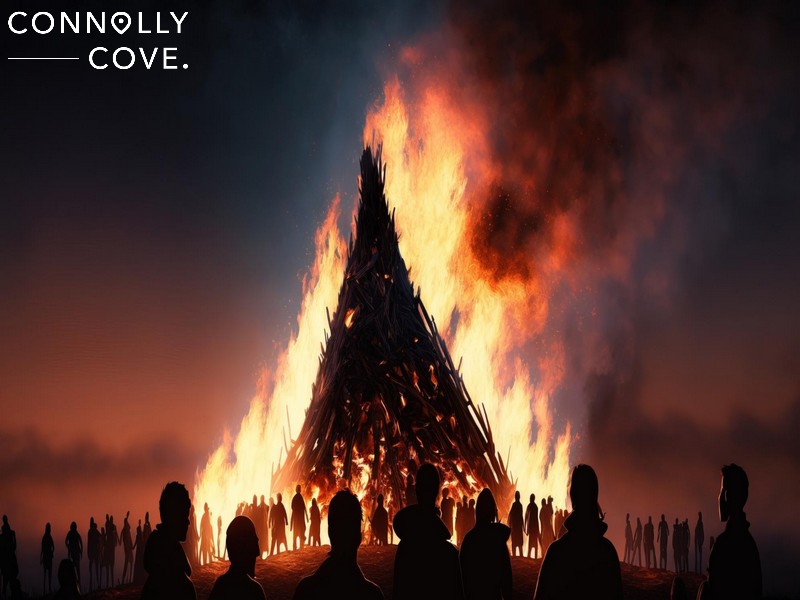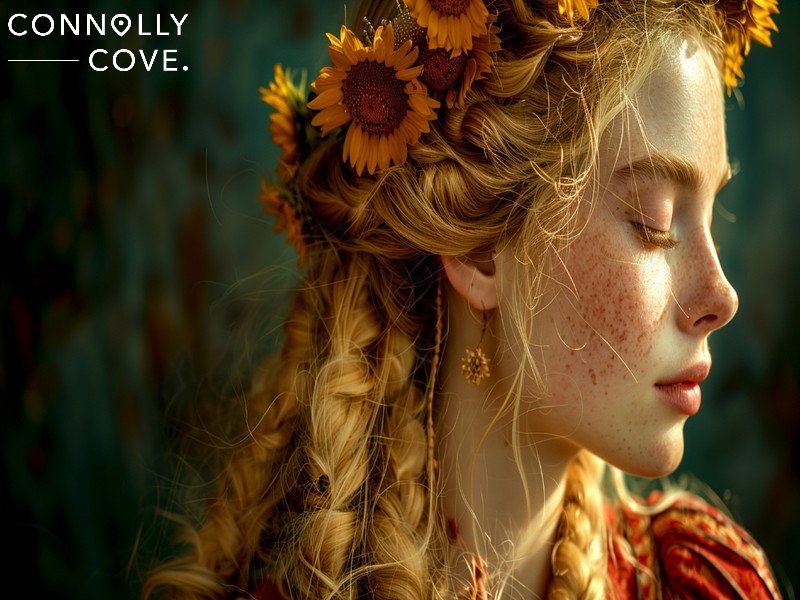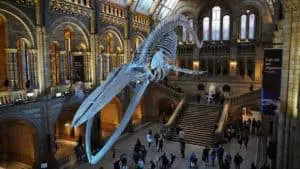Imbolc Celebrations: Hailing the Arrival of Spring and the Goddess Brigid

Updated On: April 22, 2024 by Aya Radwan
As the biting chill of winter starts to thaw, the changing colours of nature fill us with anticipation. Not far away are Imbolc celebrations, a captivating Celtic festival that marks the advent of spring. The sun decides to extend its stay in the skies more to push the lively green shades among the land, and this exciting ancient festival has celebrated the sun’s decision since the dawn of time.
However, what is Imbolc? What does it symbolise? We’ve learnt that Celtic festivals celebrated the ancient gods and goddesses, presented offerings, gathered communities, and united against unknown forces. Celtic festivities revolved mainly around seeking protection, guidance, and blessings from the gods, and Imbolc is no different.
This blog post allows us to guide you as we delve deeper into understanding and paying homage to Imbolc and its profound association with the Goddess Brigid—an iconic figure embodying fertility, crafts, prophecy, and poetry. So let’s lace up our proverbial boots for a stirring journey filled with historical narratives, rich cultural traditions and vibrant celebratory rituals – unlike anything you’ve experienced!
Who is the Goddess Brigid? Ireland’s Fierce Goddess

Brigid wasn’t your average Celtic deity. This Celtic goddess wasn’t just one thing – she was a fiery whirlwind of inspiration. Daughter of the powerful Dagda, chief of the gods, Brigid embodied the creative spark, the comforting hearth fire, and the life-giving touch of spring.
While there’s no single description of her appearance, imagine a woman with eyes that mirrored flames and a spirit as bright as the dawn. Brigid was a weaver of words, a protector of poets and healers. With a touch, she could soothe wounds and bring forth new life. But don’t underestimate her – Brigid was also a fierce guardian, a patron of smiths who wielded fire’s might to forge tools and weapons.
Her people celebrated Brigid with vibrant energy. Imbolc, a festival held on 1 February, marked the quickening pulse of winter turning to spring. Bonfires blazed, symbolising Brigid’s life-giving flame. People crafted intricate Brigid’s crosses – woven rushes representing her power over crafts and healing. Milk and food were offered, honouring her connection to fertility and livestock.
Brigid’s legacy burns bright even today. Her influence is undeniable in the life of Ireland’s Saint Brigid, a testament to the enduring power of this multifaceted goddess. Brigid reminds us that inspiration, creativity, and strength can all flicker within a single flame.
Imbolc: The Celtic Calendar Spring Festival

The Celtic calendar had four main festivals that divided the year, much like the four seasons. These four festivals included Samhain, Beltane and Lughnasadh. Each festival marked the beginning of a new season that mirrored one of the earth’s seasons since the ancient people mainly depended on farming and sheep-heralding.
Why were the Celtic Calendar Festivals Important?
The Celtic calendar festivals were important for several reasons:
- Connection to Nature and Seasons: They revolved around key points in the agricultural year, marking the changing seasons, solstices, and equinoxes. This helped people plan their activities, like planting crops, harvesting, and preparing for winter.
- Community and Social Cohesion: Festivals brought people together for celebrations, feasting, and rituals. This strengthened social bonds and fostered a sense of community.
- Appeasement and Gratitude: The Celts believed the natural world and deities influenced their lives. Festivals were a way to appease these forces, ensure good harvests, and express gratitude for nature’s bounty.
- Marking Time and Cycles: The Celtic calendar wasn’t just about practicality; it held a deeper meaning. Festivals helped people understand the cyclical nature of life, death, and rebirth, reflecting the changing seasons.
- Celebrating Life and Death: Some festivals acknowledged the veil between the worlds thinning. Samhain, for instance, was a time to remember ancestors and acknowledge the cycle of life and death.
These festivals allowed the Celts to connect with nature, their community, and the spiritual forces they believed shaped their world.
Origins and History of Imbolc
Long before Christianity arrived in Ireland, the Celts marked a special time in early February – Imbolc. Rooted in Gaelic tradition, it wasn’t just a celebration but a recognition. The harshest part of winter was waning, and the first touches of spring tickled the earth.
Imbolc acknowledged this colourful shift, honouring the quickening pulse of life beneath the frosted ground. But Imbolc’s story doesn’t end there. Centuries later, it would evolve into a Christian holiday called Candlemas, weaving a fascinating tapestry of tradition and faith.
Ancient Celebrations of the Arrival of Spring
Imbolc was an old festival. It marked the start of springtime in Celtic lands. People thought this day sat right between winter’s darkest night and the first day of spring. The festival was a time for hope after long, cold nights. It brought joy to people as they could see brighter days ahead. They celebrated the sun’s return and nature starting new life again. Even today, we keep up with this custom from our ancestors on 31 January until 1 February each year.
The people held special festivities to mark Imbolc. Bonfires roared across the land, their flames a symbolic defiance against the lingering grip of winter. The warmth and light embodied Brigid, the fiery Celtic goddess, whose influence was particularly potent during Imbolc.
Everyone busied themselves with crafts, weaving intricate Brigid’s crosses from rushes. These weren’t just decorations but potent symbols of Brigid’s power over healing and protection. Placed above doors and windows, they served as guardians against misfortune. Offerings of milk and food were left for Brigid, acknowledging her role in fertility and the well-being of livestock.
Celebratory feasts crackled with energy. Communities gathered to share stories, sing songs, and make merry. Imbolc signified the end of winter with a joyous embrace of the promise of spring, a time to rekindle the creative spark and prepare for the vibrant season ahead.
Evolution of Imbolc into a Christian Holiday

Imbolc, originally a Celtic festival celebrating the arrival of spring, transformed into a Christian holiday over time. This happened because early Christians often adopted and Christianised existing pagan celebrations to help spread their religion.
Imbolc became known as Saint Brigid’s Day in honour of the Celtic goddess Brigid, who was associated with fertility and healing. The date for Imbolc also coincided with Candlemas, which marked the presentation of Jesus at the temple forty days after his birth.
Over centuries, these different traditions blended to create a unique celebration, merging elements from Celtic and Christian beliefs. Today, people still commemorate this special day by honouring the goddess Brigid while recognising its Christian significance as Saint Brigid’s Day.
Modern-day Celebrations and Traditions
During modern-day Imbolc celebrations, people come together to honour the arrival of spring and pay homage to the goddess Brigid. This festive time is marked by various customs and traditions that reflect renewal and rebirth.
Many individuals light candles or bonfires to symbolise the return of light after the darkness of winter. Others engage in creative activities like crafting, writing poetry, or cooking seasonal dishes to celebrate Brigid’s association with inspiration and fertility.
Additionally, some may participate in rituals and ceremonies that focus on healing and connecting with nature. Although the scale of celebratory events has scaled down since ancient times, the people revere Saint Brigid and seek her blessing over the land. Overall, these modern-day traditions help us connect with our roots, celebrate the changing seasons, and acknowledge the ever-present cycles of life.
Honouring the Goddess Brigid
Honouring the Goddess Brigid is a central aspect of Imbolc celebrations, as she plays a significant role in Celtic mythology and represents various qualities such as inspiration, creativity, healing, and fertility.
Brigid’s role in Celtic mythology
In Celtic mythology, Brigid is a significant goddess of inspiration, creativity, healing, and fertility. She is revered as the patroness of arts and crafts, poetry, and prophecy. Brigid symbolises spring’s arrival and life’s renewal after winter’s darkness. As part of Imbolc celebrations, she is honoured for her association with light and new beginnings.
Today, many people still connect with Brigid’s divine femininity and incorporate her teachings into nature-based spiritual practices. Her presence during Imbolc reminds us to embrace seasonal transitions and find inspiration in the beauty of nature’s rebirth.
Modern Interpretations and Practices
During modern Imbolc celebrations, people continue to honour the goddess Brigid and embrace her inspiration, creativity, healing, and fertility qualities. Many Wiccan and pagan communities view Imbolc and the remaining Celtic festivals as a time for purification and new beginnings.
Rituals often involve lighting candles to symbolise the returning warmth of the sun and performing ceremonies that focus on growth and renewal. Some individuals also partake in crafts such as making Brigid’s crosses or creating artwork representing the changing seasons. Modern interpretations of Imbolc emphasize connecting with nature, celebrating feminine energy, and embracing the transition from winter to spring.
Significance of Brigid During Imbolc celebrations
During Imbolc celebrations, the goddess Brigid is highly significant. In Celtic mythology, Brigid is associated with inspiration, creativity, healing, and fertility. Many modern interpretations of Brigid focus on her role as a symbol of divine femininity and nature-based spirituality.
During Imbolc, people honour Brigid by lighting candles and performing rituals celebrating renewal and rebirth. She represents the transition from winter to spring and brings hope for a new life after the darkness of winter. With her presence felt during this festival, Brigid adds an element of magic and connection to nature, enhancing the overall celebration.
In conclusion, Imbolc is a special time to celebrate the arrival of spring and honour the goddess Brigid. This ancient festival has evolved but still holds significance for many today. By embracing rituals and ceremonies, we can connect with nature’s renewal and the divine femininity that Brigid represents. So, let’s welcome the return of light and embrace the beauty of this season together.
FAQs
1. What is the intention of Imbolc celebrations?
Since this ancient pagan festival celebrates the waning of the winter frost, its celebrations are the ideal opportunity to reflect on the goals you set earlier at the beginning of the new year. Ideally, it’s best to meditate, preferably outside in the heart of nature, and rethink your set goals, not just for the spring but for the entire year.
2. Why is Imbolc a fire festival?
This festival is a fire festival because it celebrates the Goddess Brigid, or patroness saint, the goddess of fire. This symbolism continues the significance of fire in all major Celtic festivals.
3. When does Imbolc occur? And how long does it last?
Imbolc occurs halfway between the winter solstice and the spring equinox, marking the end of winter’s chill and welcoming warmer weather. Celebrations begin on 1 February and end by sunset on 2 February.
4. Is there any specific way to celebrate Imbolc?
Yes! In keeping with ancient Celtic traditions, modern nature-based spirituality groups organise various activities for Pagan festivals such as Imbolc, focusing on Goddess worship.
5. Can anyone take part in these celebrations?
Yes! Even though it’s primarily a Wiccan and Pagan holiday from Celtic tradition, everyone is welcome to participate, respecting local customs and norms.






